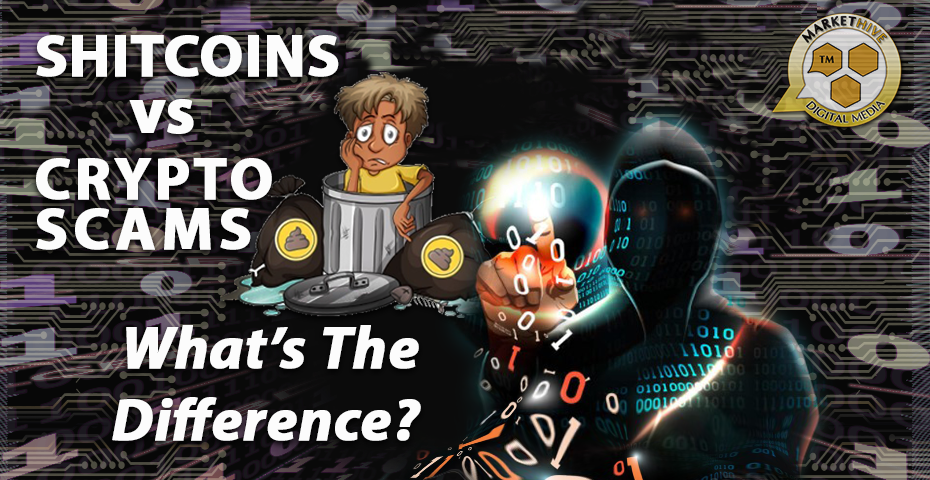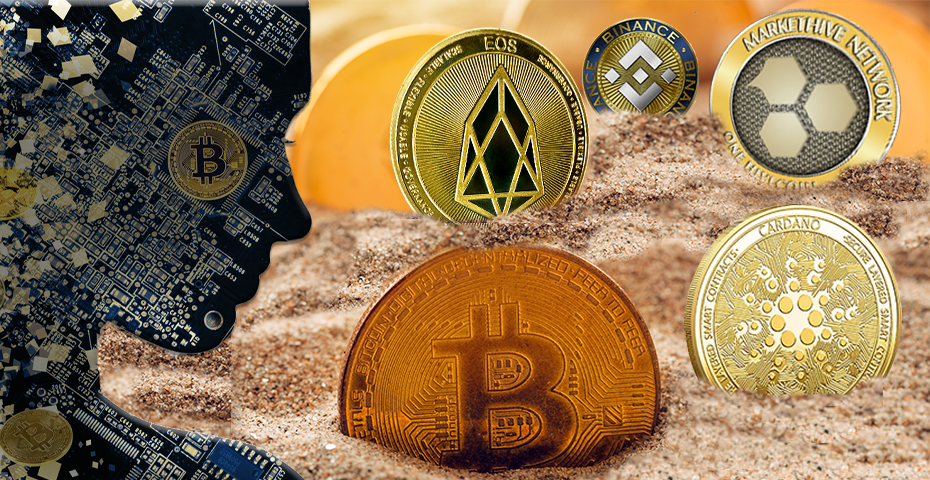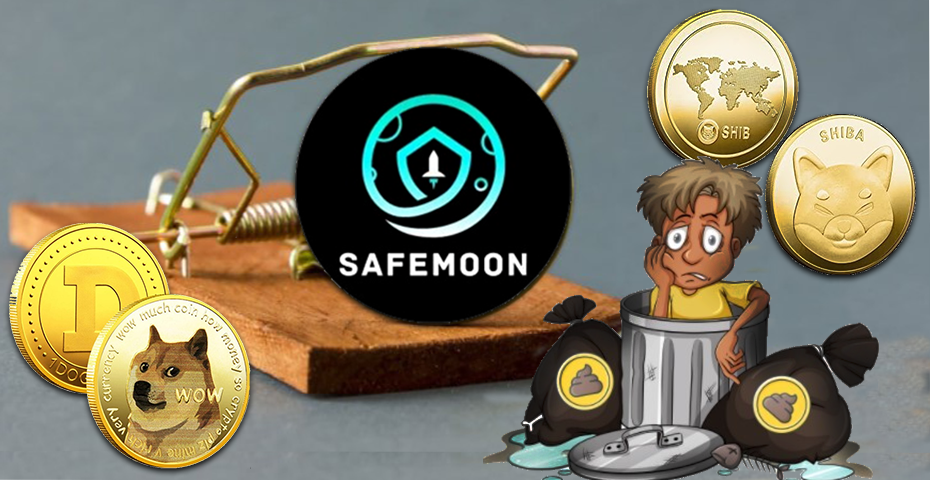


There are many types of scams society has fallen victim to that have been around for decades. Charity scams, insurance scams, et al. are all too common, and they are more rampant than ever now we have the internet. And as technology emerges, anyone can simply create a crypto token which opens a pandora’s box of newly defined crypto chaos.
The cryptocurrency market has exploded since the inception of Bitcoin, with 1000s of alternative coins now listed on various exchanges. Many have earned the respect of the crypto community by applying actual use-cases with developing technologies. While prominent cryptocurrency coins display transparency, genuine utility and serve a purpose for a decentralized application or an associated blockchain, many altcoins hold no real value.
These coins are referred to as shitcoins and have no discernable purpose, and they are often targeted towards less experienced people in an effort to exploit them. The term shitcoin is commonly used for a copy or clone of another well-known crypto, or it can be a brand new project. It’s very much based on personal opinion.
But are all shitcoins crypto scams? Not necessarily. There are inconspicuous scams out there orchestrated by greedy evil-doers hiding behind the guise of benevolence and charity and taking advantage of the crypto craze and people’s naivety of the nascent crypto industry. I’ll touch on that later with an example.
Importantly, any crypto with no meaningful purpose and often no genuine demand for the coin, whatever value it may generate depends on pure speculation and is considered a precarious investment. Shitcoins are digital currencies that people believe to be valuable simply because they exist. Centered around hype and shills, they are very prone to pump and dumps and rarely recover.
The crypto projects that rely on paid shills to pump their coin or token should be viewed with immense suspicion. Why should they feel the need to create an artificial perception of demand? Does that mean that there is no genuine organic interest in the project?
On a side note; If you’re not familiar with the terminology in this article relating to the crypto industry, here is a breakdown of the most common crypto lingo.
It is often easy to identify a shitcoin because many follow a specific pattern. When a shitcoin is first launched, the token may attract some interest, but its price remains relatively low. The low price attracts newbie investors naively thinking they’ve invested in the “next Bitcoin,” further validated by a high-profile influencer backing it for whatever reason.
As interest peaks and investors jump in, prices spike quickly. This is almost always followed by the price tanking. The sharp fall in price is caused by investors selling their coins to profit from short-term gains. Usually, these pump and dump schemes are dominated by only a few “insiders” who really know the price dynamics and know when to sell to profit. The process is often associated with shitcoins and can leave many retail investors stuck with worthless tokens.

The most obvious sign of a shitcoin is a lack of a well-defined function.
Bitcoin was built for a decentralized payment network where financial transactions are secure, trustless, and censorship-resistant. It is now classed as the store of value for cryptocurrencies.
Ether, the coin native to the Ethereum blockchain, is used to validate transactions and secure the network.
Binance Coin, the token native to the Binance Exchange, reduces fees on the Binance platform and powers the associated Binance Chain blockchain.
ADA, the native coin to the Cardano blockchain, is used to further develop applications, Defi, smart contracts, scalability, and interoperability.
Hivecoin, Markethive’s native currency, is used to power a decentralized social media and multi-dimensional marketing platform, sovereign from the social media and tech oligopoly.
Shitcoins do not have such clearly defined purposes.
Discerning a shitcoin is more straightforward when looking into the background development and associated project (if one exists).
If there are contentious answers to any of these questions, the cryptocurrency could well be a shitcoin. A whitepaper is intended to be the technical details behind a project. It is not supposed to be an easy read. When a whitepaper is overly visual and lacks technical solutions, consider that a red flag.
Numerous examples of projects have developed a cryptocurrency for something that really did not need one at all. Let’s not forget that the future value of a utility token will come from its actual use.

Although subjective, here are some of the more well-known shitcoins within the cryptocurrency market:
Dogecoin (DOGE). This meme-based cryptocurrency was designed around a comical picture of a Shiba Inu dog called Doge. The coin was initially created as a joke. Much of the coin's popularity has been the result of influencer encouragement and hype.
Shiba Inu (SHIB). Following Dogecoin's success, SHIB was developed as a token simply named after the Shiba Inu dog breed. It serves no purpose and is not associated with any blockchain or decentralized application. The maximum supply of tokens was set at one quadrillion.
Safemoon (SAFEMOON). Safemoon is a Ponzi-inspired coin that punishes holders for selling. Holders are charged an additional fee by the network when they sell, which is distributed to other holders.
As I previously mentioned, it is so easy to generate a token for any reason. This video shows you what to do, or should I say what not to do, for the sake of the future of crypto and for humanity.
The presenter also gives you his take on Safemoon and its ICO, which may be why certain authorities have outlawed ICO’s. Initial Coin Offerings are predominantly unregulated and have been the vehicle for scams and fraud. Consequently, the SEC has deemed them as securities and restricts unaccredited investors from participating.
With technology, many projects can look legitimate at face value, so it’s easy to fall for their narrative as many unsuspecting people have done only to find they’ve been scammed with no recourse.
Crypto scams have sky-rocketed, and it doesn’t help when popular social media influencers get involved claiming to be ambassadors for the cause. Playing on people’s emotions and goodwill makes the charity sector a sitting duck for crypto scams.
One such example was the “Save The Kids” project, and unfortunately, many didn’t see the red flags and were fooled into investing their hard-earned money into this scam. There are many scams out there, but this one takes the cake for me. The video below explains it all.
There is a critical shortage of quality information about cryptocurrency, with only a handful of proven experts that can explain cryptocurrency and how it genuinely works in simple terms. There are millions of people desperate for more information to benefit from this developing industry which gives the opportunists a platform and immense power to shill and cook up crypto scams that can last for months or years.
Scammers and shills take advantage of this narrow flow of information, purporting to be crypto gurus, and mislead or fool people looking for answers with their narrative, which by enlarge is speculative, even erroneous.
Shitcoins are risky investments that most cryptocurrency enthusiasts should avoid. For investors who love risk and know what they’re doing, shitcoins may present an opportunity to make somewhat large but short-term profits.
And outright scams? Well, tread very carefully. Do your research before committing. Who is behind the project? Are they credible? Have they been involved in any questionable projects in the past? How long have they been involved in the blockchain space?
With experience comes knowledge and wisdom. As the saying goes, “Fool me once; shame on you. Fool me twice; shame on me."
